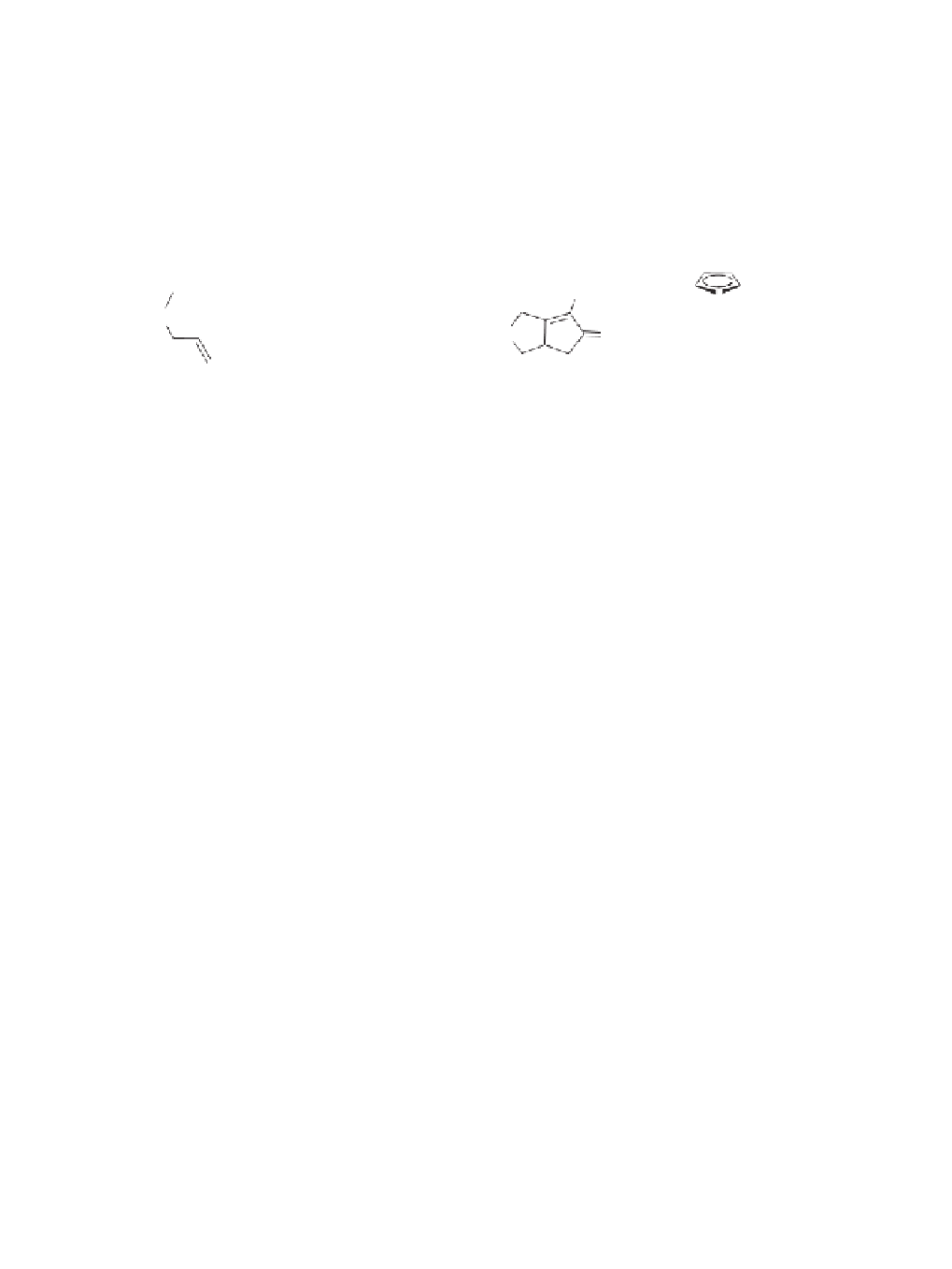Chemistry Reference
In-Depth Information
(Scheme 7.33).
63
The desired nitrogen-containing cyclopentenone was obtained in good
yield and high enantioselectivity (up to 95% ee). Although various kinds of 1,6- and
1,7-enynes were successfully converted to their corresponding products, the application of
dicyclopentadienyl- titanium dicarbonyl complex was limited in sterically hindered alkynes
and/or olefins. Thereafter, Buchwald and co-workers developed new monocyclopentadi-
enyltitanium aryloxide complexes to apply in the intramolecular Pauson-Khand reaction
(Scheme 7.34).
64
Me
Me
10-15 mol%
(
S,S
)(ebthi)TiMe
2
R
N
Me
Ti
R
N
O
Me
Toluene, 95
°
C, 12-45 h
CO (14 psig)
*
R = alkyl, allyl, Ph
Up to 95%
ee
93% yield
(
S,S
)-(ebthi)TiMe
2
Scheme 7.33
Enantioselective Ti-catalyzed PKR of
N
-tethered 1,6-enynes.
Me
Me
Me
Me
Me
TiCl
2
R
TiCl
2
O
R
O
R
R
Cp(DPP)TiCl
2
Cp(DIPP)TiCl
2
Cp(DME)TiCl
2
Cp(DM)TiCl
2
R = Ph
R =
i
-Pr
R = OMe
R = Me
Cp*(DPP)TiCl
2
Cp*(DIPP)TiCl
2
R=Ph
R=
i
-Pr
Scheme 7.34
A series of monocyclopentadienyltitanium aryloxide complexes.
They found that pentamethylmonocyclopentadienyl complex Cp
∗
(DPP)TiCl
2
failed
to react with enyne to form metallocycle while the monocyclopentadienyl complex
Cp(DPP)TiCl
2
was feasible (Scheme 7.34). The Buchwald group examined a series of
these complexes for the formation of metallocycles. Interestingly their catalytic activities
were specific toward different enynes. Complex Cp(DPP)TiCl
2
was found to mediate cyclo-
carbonylation of trimethylsilyl-substituted enynes effectively. Employing Cp(DIPP)TiCl
2
assisted the cyclocarbonylation of trisubsituted olefins while complex Cp(DME)TiCl
2
me-
diated the cyclocarbonylation of phenyl-substituted enynes. Complex Cp(DM)TiCl
2
was
particularly suitable for mediating the diene cycloisomerization.



















